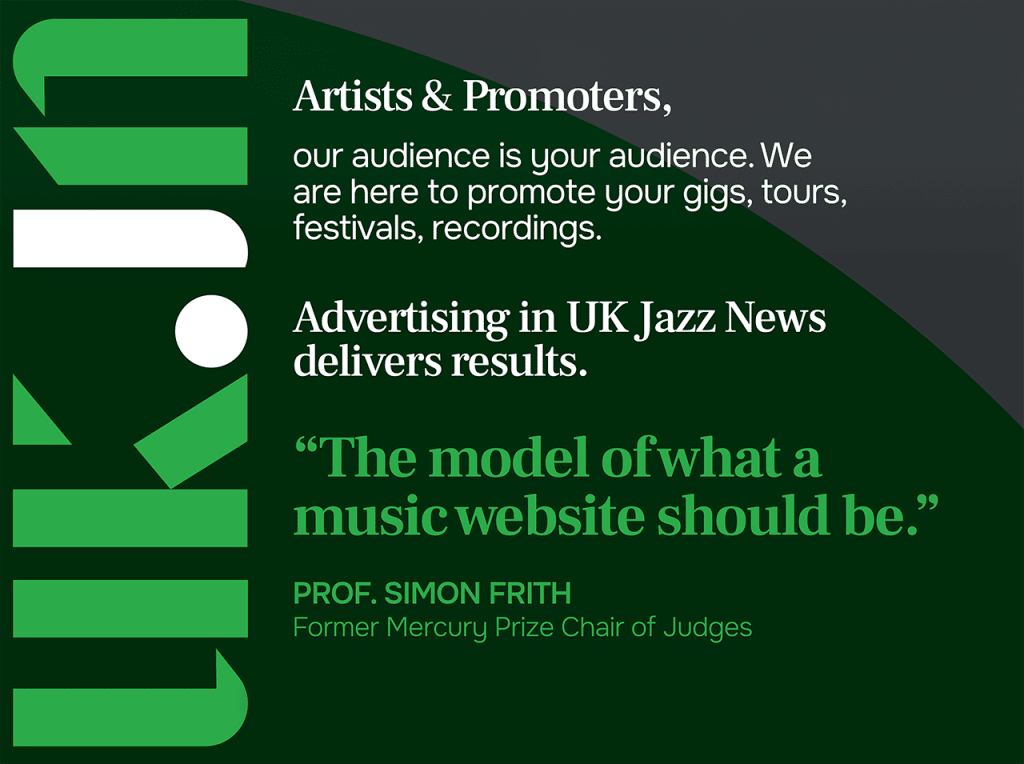The following is an interview between jazz journalist Morgan Enos and trombonist Michael Dease. His new album, Grove’s Groove – a tribute to Roy Hargrove – is out 23 August via Le Coq Records.
The nine-song collection features Dease on baritone sax instead of trumpet, joined by trombonist Steve Davis, trumpeter Terell Stafford, guitarist/vocalist Jocelyn Gould, pianist Bill Cunliffe, bassist Rodney Whitaker, percussionist Alex Acuna, and drummer Ulysses Owens Jr. Links to purchase the album, and to Dease’s website, can be found at the bottom of this article.
The three people who regularly read my weekly jazz column may remember that the very first one, almost a year and a half ago, featured the preeminent trombonist and composer Michael Dease. When he was about to drop another record, it just felt right to reconnect with him.
This was for three reasons. Firstly: I just like his music, and his playing, full stop. Secondly: he gave me such a sweet and intelligent vibe that I’d be stupid not to reconnect. Thirdly, and most importantly: I’m not as up to speed on the late, great trumpeter and composer Roy Hargrove as I should be by now.
Granted, I’ve known who he is, and understood his stature, but not nearly as deeply as I should have. Dease’s new album, Grove’s Groove, with a band not to be believed, is not only beneficial for my knowledge bank: if you’ve never heard of Hargrove in your life, you’re in for a treat – and commanded to trawl Hargrove’s discography afterward.
UK Jazz News: Hargrove died just as I was dipping a toe into the New York jazz scene, so I didn’t get a chance to enjoy him while he was around. How would you sum up his impact?
Michael Dease: Roy was scooped up from the scene in Texas, where he grew up. He’s from Waco, Texas, and everybody in that area and throughout Texas saw his talent developing. He was picked up in his late teenage years, and thrust pretty immediately into professional life.
He started touring with his famous quintet with Marc Cary on piano, Antonio Hart on alto saxophone, Rodney Whitaker on bass, and Greg Hutchinson on drums.
At a very young age, he started playing with Wynton Marsalis, who was one of the people who discovered him. Roy got picked up and put in bands, and really learned this music the way of the old school: out on the gig, touring all over the world with his own group. So, he made a big impact.
To me, he was sort of the living representation that you could be a working jazz musician and still play with others, play your music, get a band together, influence the next generation. He was an influencer, melodically and with his personality. He had a really strong atmosphere and vibe around him.
To me, he was also the quintessential collaborator of his generation. It wasn’t enough for him to just play with Art Farmer, or John Hicks, or the people above him in the jazz hierarchy. He had to branch out.
He was noted for playing with everybody, most influentially, I think, with Erykah Badu, when she hit the scene. He had all these different projects: Roy Hargrove’s Crisol, the RH Factor, the big band (which I was part of for many years), and his quintet, which kept the standard set for straight ahead jazz all over the world.
In his 40s, he became a fashion trendsetter. He was one of the cats collaborating with Common, and putting sneakers and hip tennis shoes – a small taste of hip hop sensibility – into the fashion of jazz.
UKJN: As soon as I showed up [on the scene], it was abundantly clear he stood tall.
MD: That’s interesting you put it that way, because he was quite short! But yeah, he stood tall in how serious he took the music, and the expectations that he had for those he collaborated with.
I’m really honoured to be one of the cats mentored by him. There are so many of us that were: David Gibson, Andre Hayward, Saunders Sermons, Max Siegel – and that’s just the trombones. There are so many cats on every instrument.
I missed Dizzy Gillespie; unfortunately, he passed away before I got on the scene. So, I’m so grateful that Roy Hargrove is our Dizzy Gillespie. He was the one who would show us chords at the piano, teach us lyrics. He held us to a standard that not only made us better, but made all the music better around us.
When he ran a jam session, he would tell you to leave if you didn’t know the verse or the intro, if you tried to front like you knew the song, because you wanted to play.
He represented through his actions that it’s more important than just wanting to play; you have to do the work. You have to show that you have a level of commitment to what we’re all gathered here to celebrate.
UKJN: How’s your journey with the baritone sax been? In our last conversation, we were talking about trombone touchstones like Curtis Fuller and J.J. Johnson. Who are your bari guys?
MD: I love the baritone saxophone. I love the community. I love the players, of old and among us.
The people that have impacted me, they’re still here. I think the first baritone player I got into was Joe Temperley, because I was listening to the Jazz at Lincoln Center Orchestra so much.
Wynton was, and still is, one of my huge heroes, and so I heard Joe Temperley’s cavernous baritone saxophone, and I was like, Whoa. It takes a whole lot of air and practice to be able to send a sound like that forward.
Claire Daly I got to meet in New York City. She was one of the first people I met, always so kind and supportive and funny, with an amazing sense of humour and camaraderie, of the New York jazz spirit.
Then, I certainly love the playing of my friends. Gary Smulyan – fantastic baritone player.Carl Maraghi, who I went to school with, and was one of the first people I heard play the instrument so passionately. And then, certainly, Frank Basile and Jason Marshall. I did a program once with Shirantha Beddage, a wonderful baritone saxophonist and composer of his own original music.
So, I can’t speak enough about the baritone. It’s in good hands, and the players from the past that inspire me are certainly Gerry Mulligan and Harry Carney, but also Serge Chaloff.
UKJN: Can you talk about the concept of the band on Grove’s Groove?
MD: I try to make things exciting on different levels, and diversity is incredibly important to me.
I need perspective in my music. Terrell Stafford is from Miami, by way of Philly; Steve Davis is from upstate New York; Rodney Whitaker is from Detroit; Bill Cunliffe is from New York, but is an LA person now; and Jocelyn Gould is from Winnipeg, and makes her home base in Toronto.
I just love the way people bring different experiences and information with them, and that makes our conversation richer and deeper.
It’s not just one clique of cats, it’s not one neighbourhood of best friends that grew up playing together, and only want to play together. It’s about our differences making us stronger. That’s the true meaning of equality, and that’s something I learned watching Roy, and getting to be around his projects.


